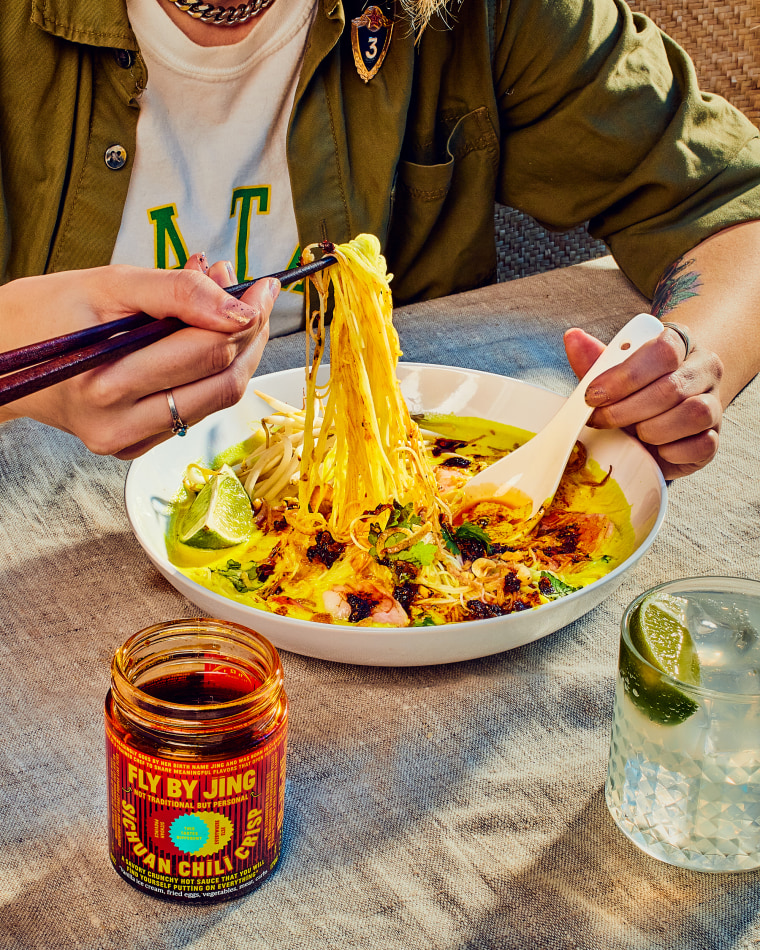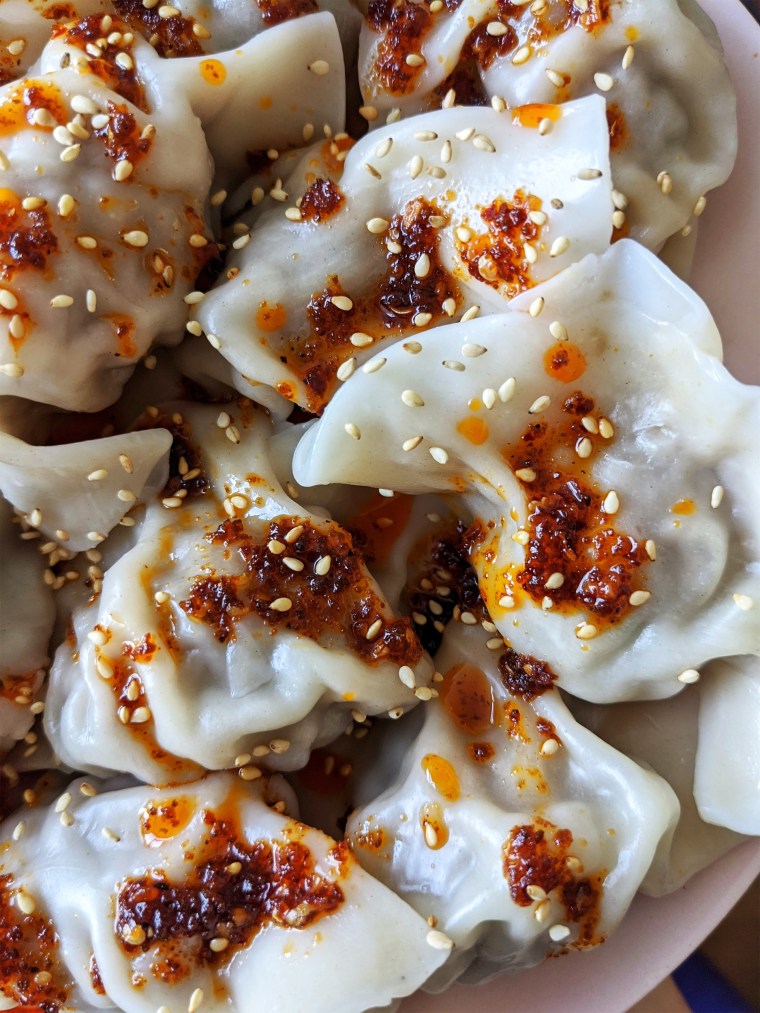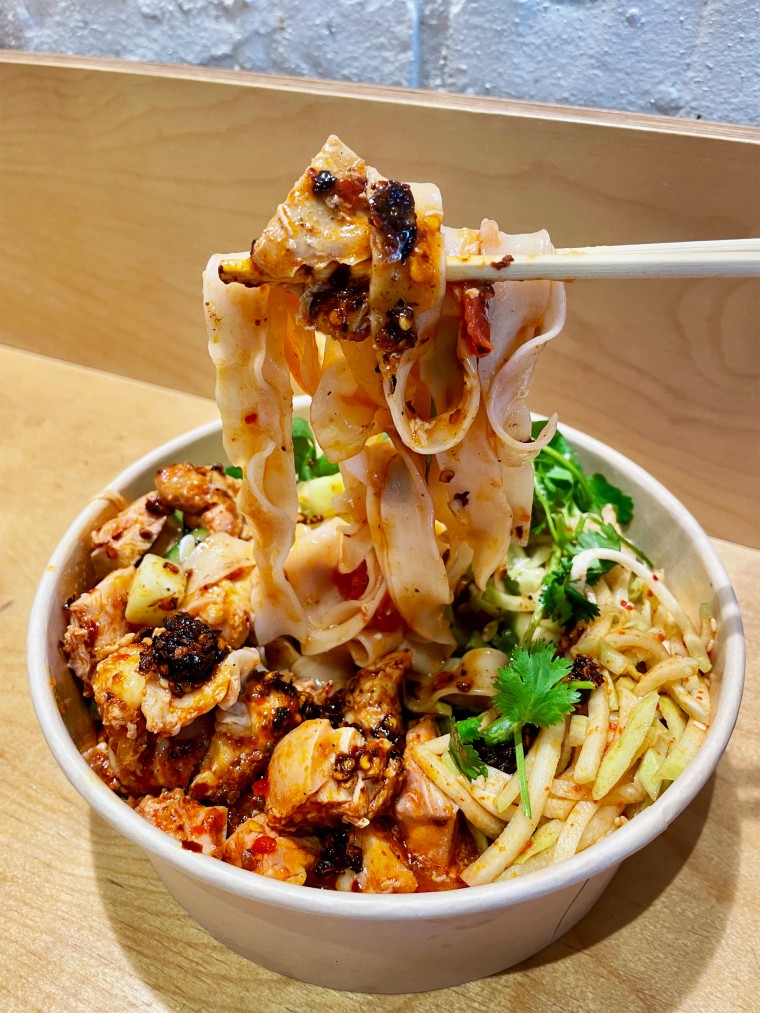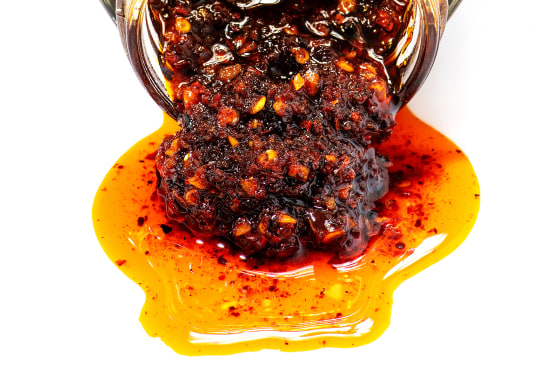Sichuan chili crisp — a tangy, crunchy, generously spicy sauce that lands on the tongue as a flavor explosion — has starred as the MVP of many recipes during the pandemic.
Drizzle it on a vanilla sundae or melt into a peanut sesame brittle. Better yet, just toss it on a watermelon and burrata salad. Catching onto the trend, prominent figures in food media, including Food Network host Giada de Laurentiis, created their own chili crisp recipes.
Of course, the sauce elevates dishes with complimentary flavors, too, so slather it onto grilled cheese or a scrambled egg sandwich.
As the pandemic pushed home chefs to spice up familiar dishes with novel flavors, the beloved Asian condiment has earned a cultlike following in the U.S. Like the Korean chili paste gochujang, Sichuan chili crisp — sometimes called chili oil, despite slight differences in texture — has gone mainstream after it got the white influencer treatment.
But its popularity has been building for years now, fueled by an expansion of Chinese American cuisines and the determination of younger Asian American chefs to make it more accessible to the public.

“Sichuan chili crisps are very versatile, with a very complex flavor profile,” said Jing Gao, the owner of the Sichuan ingredients brand Fly by Jing. “You can add it to anything, which is why they go so well with home cooking.”
Fly by Jing’s blockbuster $15 chili crisp jars, which launched on Kickstarter in 2018, hit the shelves of Whole Foods, Target and a host of other major grocery stores this fall.
A historian of Chinese food, Miranda Brown, a Chinese studies professor at the University of Michigan, said the chili crisp craze is largely driven by a growing interest in Sichuanese flavors, in both China and the U.S., over the past few decades.
“Spices came into fashion only in the last generation,” Brown said, noting that Lao Gan Ma, the most famous mass-produced chili crisp in China, launched only in 1997. “There’s a rediscovery inside China of its own regional cuisines, and that then moved abroad.”
In the U.S., Brown said, the spice craze went beyond Chinese cuisine.
“That’s how you’re seeing interest in Thai and Indian food, and gochujang is part of it, too,” she said. “When people become interested in a particular flavor palate, they start to explore.”

Many of the new chili crisp variations in the country are created by second-generation Chinese and Taiwanese American restaurateurs eager to put their own stamps on food they grew up eating.
“One thing we’ve seen with millennial Asian American chefs is this desire to distinguish their products from traditional dishes like chop suey or sweet and sour pork,” Brown said. “One way to do that is to introduce lesser-known regional cuisines.”
When New York City went into lockdown last spring, a handful of millennial-owned eateries that served house-made chili crisps and oils began selling limited quantities of them online.
Eric Sze, a co-founder of the Taiwanese restaurant 886, created a $10 chili oil sauce called Sze Daddy, which sold out within weeks.
Junzi Kitchen owner Lucas Sin’s two-jar chili oil pack starts at $20.
Wilson Tang, the owner of the century-old dim sum mainstay Nam Wah Parlor, also released a signature pack that went out of stock quickly.
Fly by Jing’s chili crisp sauce, Gao said, got so many orders during the lockdown that she sold out of many months of inventory in a few days.
These personal recipes of Asian American chefs engendered a groundswell of interest and hunger for chili crisp that laid the foundation for its adoption by food media.

Gao said she’s not particularly bothered by the proliferation of the condiment and doesn't see it as appropriation. She said she did face harsh criticism online for the marked-up prices of her products — which she said is tied to entrenched biases people still hold about Chinese cuisine.
“The reason people think expensive Chinese food is whitewashed is because only white people are commanding those prices,” said Gao, who said her chili crisp contains 18 premium ingredients sourced exclusively in southwestern China. “It’s also saying that Chinese people don’t deserve the same value for their craft and their heritage."
Given a general lack of understanding about the history and roots of chili crisp, Gao said, it’s important to educate people about how her products are made. With a coming launch date for Costco and Sprouts, she said, she plans to turn the condiment of her hometown into an American staple.
“Since Sriracha, we’ve not had another household name that’s an Asian brand,” she said. “Our goal is to have a jar of chili crisp, and maybe even dumplings, in every single household.”
